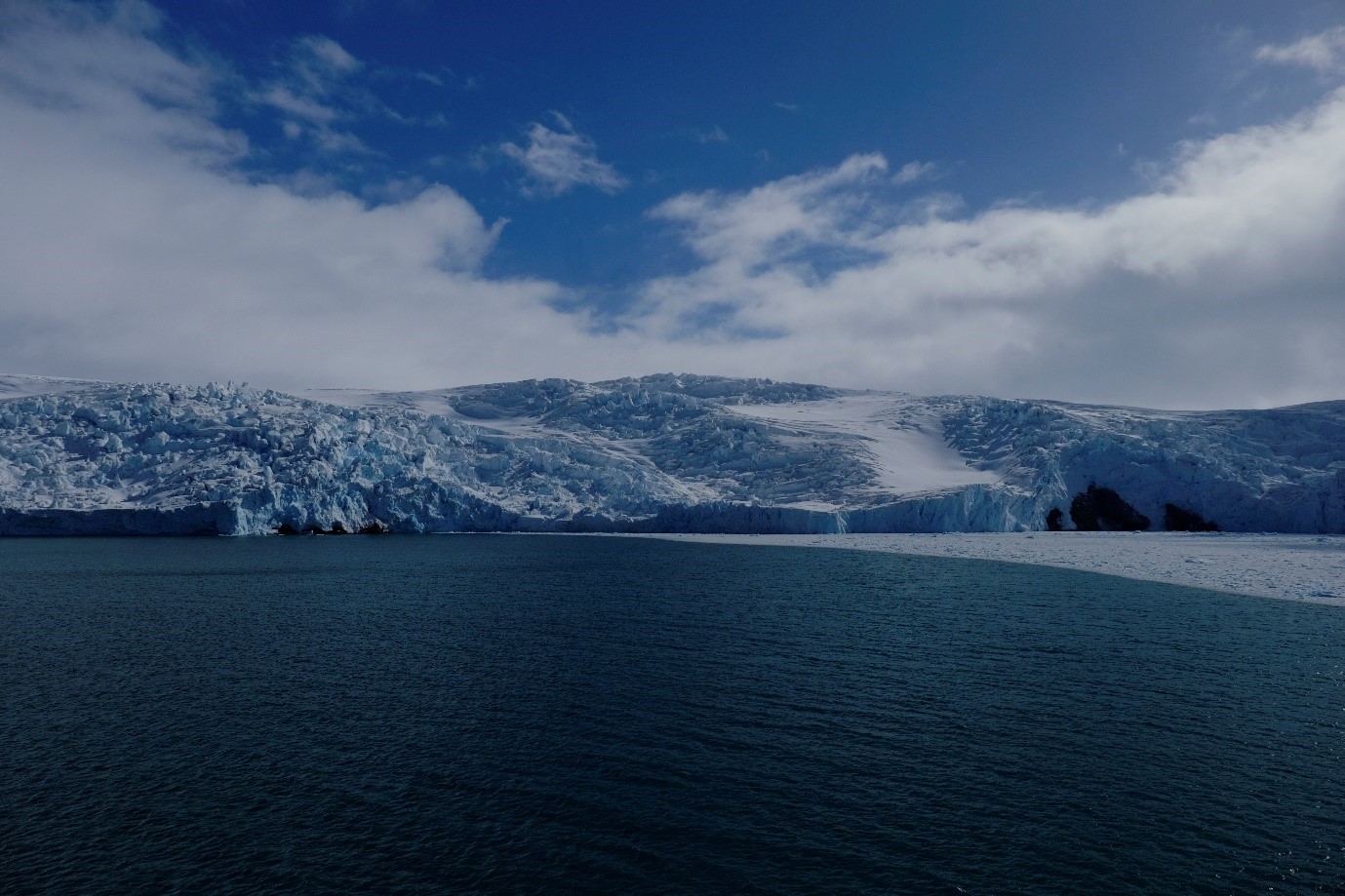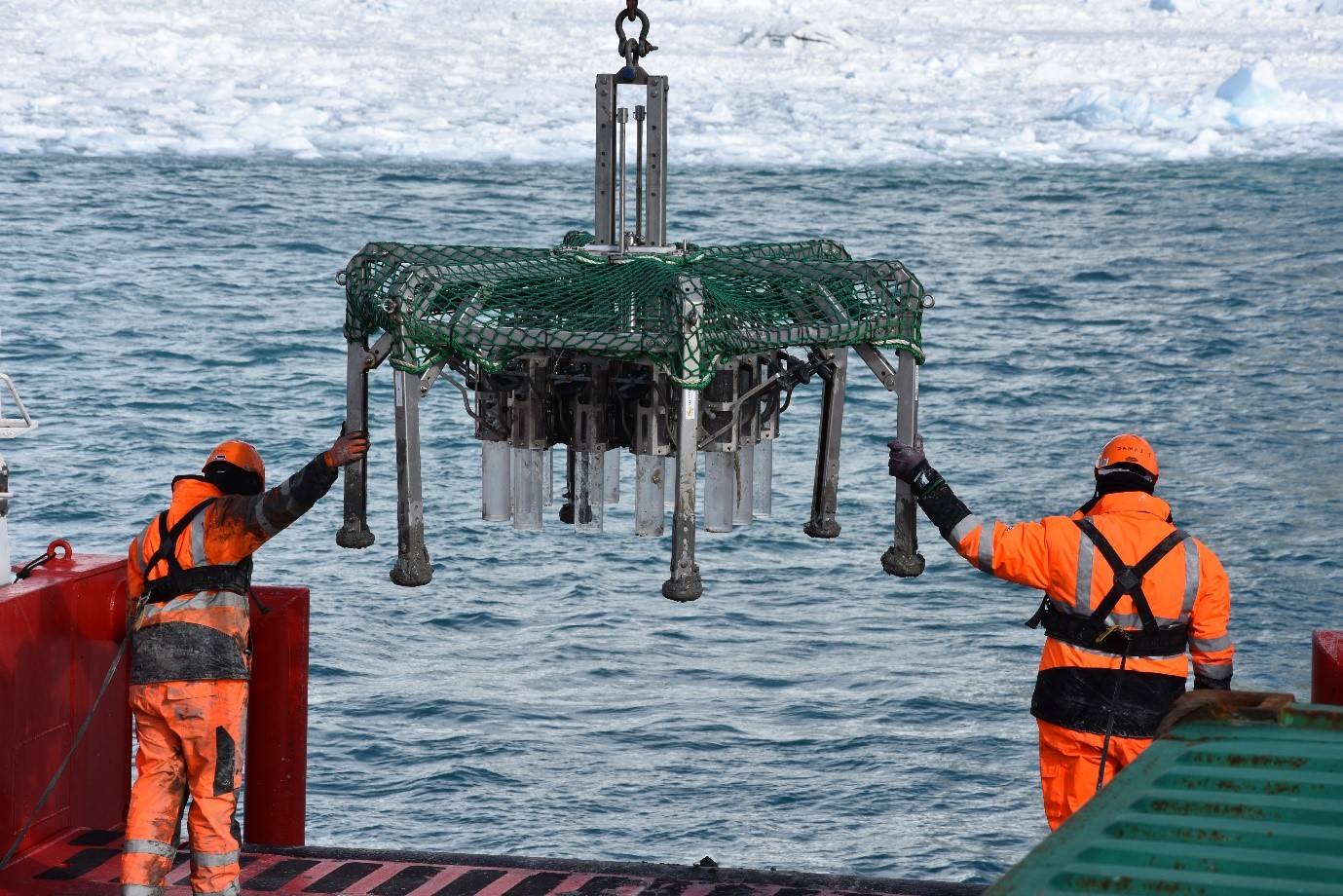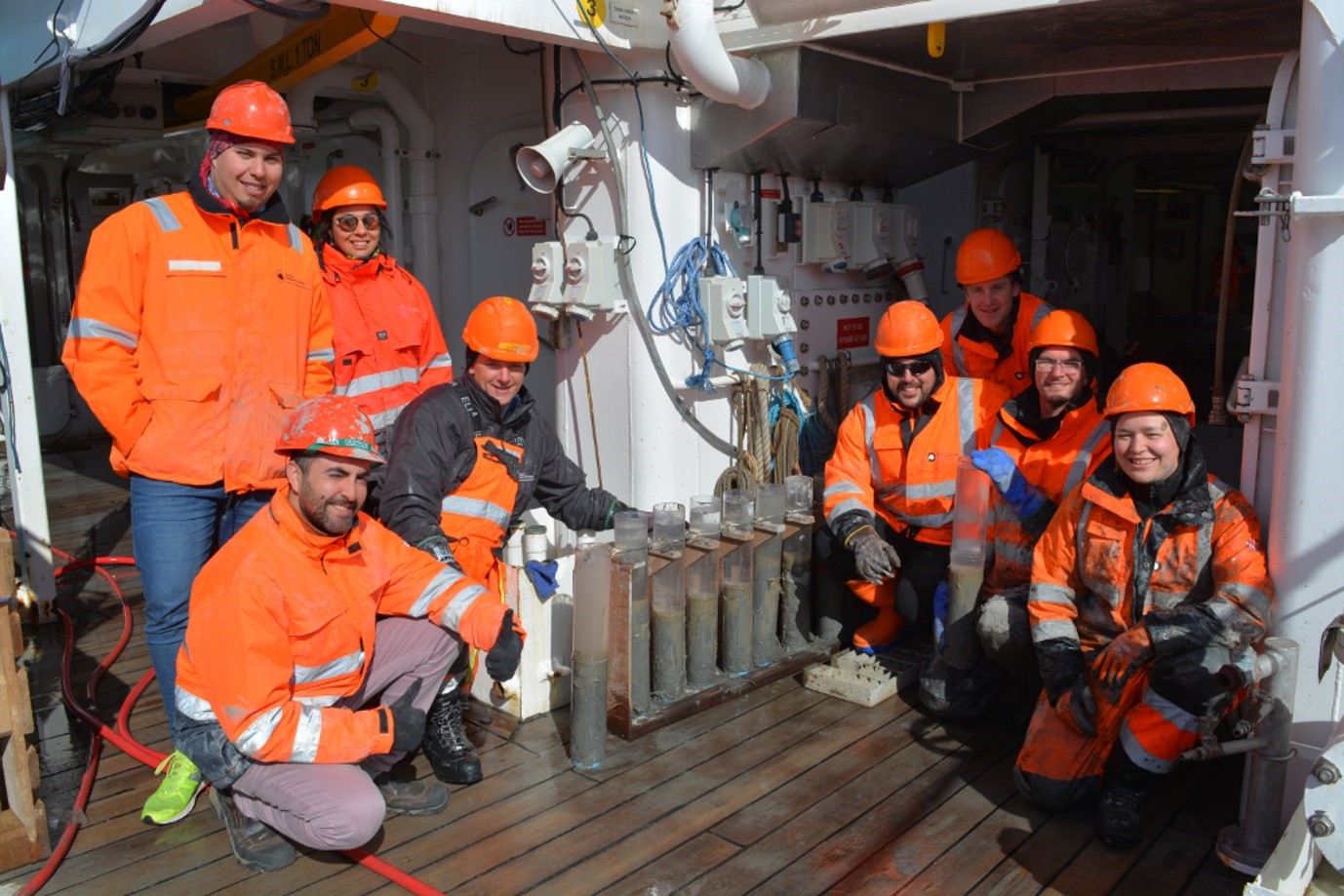Persistence and brilliant engineering
15 February, 2019 RRS James Clark Ross
Nadescha Zwerschke is a marine biologist, who was travelling on the RRS James Clark Ross (JCR) as part of the ICEBERGS 2 cruise in December 2018.
Having left Burdwood Bank the ICEBERGS cruise headed towards the Antarctic Peninsula. The setting for our fieldwork was three spectacular fjords; Marian Cove (King George Island), Borgen Bay (Anvers Island) and Sheldon glacier (Adelaide Island). These are amongst the world’s fastest retreating glaciers and their exact retreat positions have been mapped over nearly half a century. All of these fjords are navigable to the RRS James Clark Ross. This helps us to sample the environment where the glacier was before mapping, 50, 30 and 10 years ago and where it is now. Our first and most northerly call was beautiful Marian Cove.

We used a variety of different equipment to generate a suite of environmental and biological data which can be used to predict the impact of climate change on the Antarctic ecosystem and to model pre-historic conditions. For example information from our multibeam sonar (an underwater radar) allows us to view the topography of the seabed. CTDs give us information on what the water is like (measuring conductivity, temperature, depths and water quality) at different depths in the water column.
We are a very muddy team and our biggest mudcatcher is a giant one ton lollipop – or a gravity corer, basically a heavy pipe with a great weight on top, which is being pushed in the seabed. A successful core contains 3 meter of sediment allowing us to trace climate and sea conditions over thousands of years. We have a grab, which could be used to assault a castle with. This helps us to sample animals on the seabed so we get an idea of which ones and how many are there and which are the first to colonise the newly emerging environment. Finally, we have the giant spider resembling multicorer. Alike a gravity corer – only much smaller, it uses 12 cores each containing 20-30cm of sediment which we use to sample the detail (how big are the mud particles, how much carbon is in it, how quickly mud accumulates and much more) of the seabed.
The multicorer is an instrumental piece of equipment during the Icebergs cruise as a variety of projects depend on these samples. For instance, they are used to trace microplastics, tiny fossils or bacteria in the sediment. Part of my work is to look at the distribution of animals within each core and relate this to their potential to act as carbon sinks. Understanding how important these are as mitigating factors (negative feedbacks) on climate change is important to understanding the carbon cycle, improving climate models and predicting life’s response to future climate change (Find out more here).

During first deployments, we always expect a few teething issues with the equipment. However none of us were quite prepared for the trouble that awaited us with our multicorer, which did not seem to want to work at all. Scientists work around the clock in shifts whenever the ship reaches its sampling-destination and I was working on the night shift. Luck for us when the going gets tough, we get our superhero engineers! They instantly started working on the problem and left us confident that we could make up time the next night. However, it seemed that our troublesome six legged foe had different ideas and we were devastated when we found that although having previously worked on a test run the multicorer, still did not work under water. The fact that we were taking samples from 200 – 500 m depth also meant the engineers had no way of observing why it wasn’t working properly during deployment. After the second night, with still no samples we were intensely aware of the fact that the ship was scheduled to leave the next day. This is when our engineers pulled through, going to extreme length to get to the bottom of the problem and fix it.
On the third day we woke up to a working multicorer, and now had to squeeze 12 hours of work into 6. However, every soul on board did their very best to help us out in every way possible. The crew of the JCR whizzed us from station to station and the winch lifting the multicorer never stood still while every scientist on board helped to retrieve and process all the samples we received. After an incredible effort from every team member we left Marion Cove victorious – tired but extremely happy sailing further south towards Borgen Bay.
